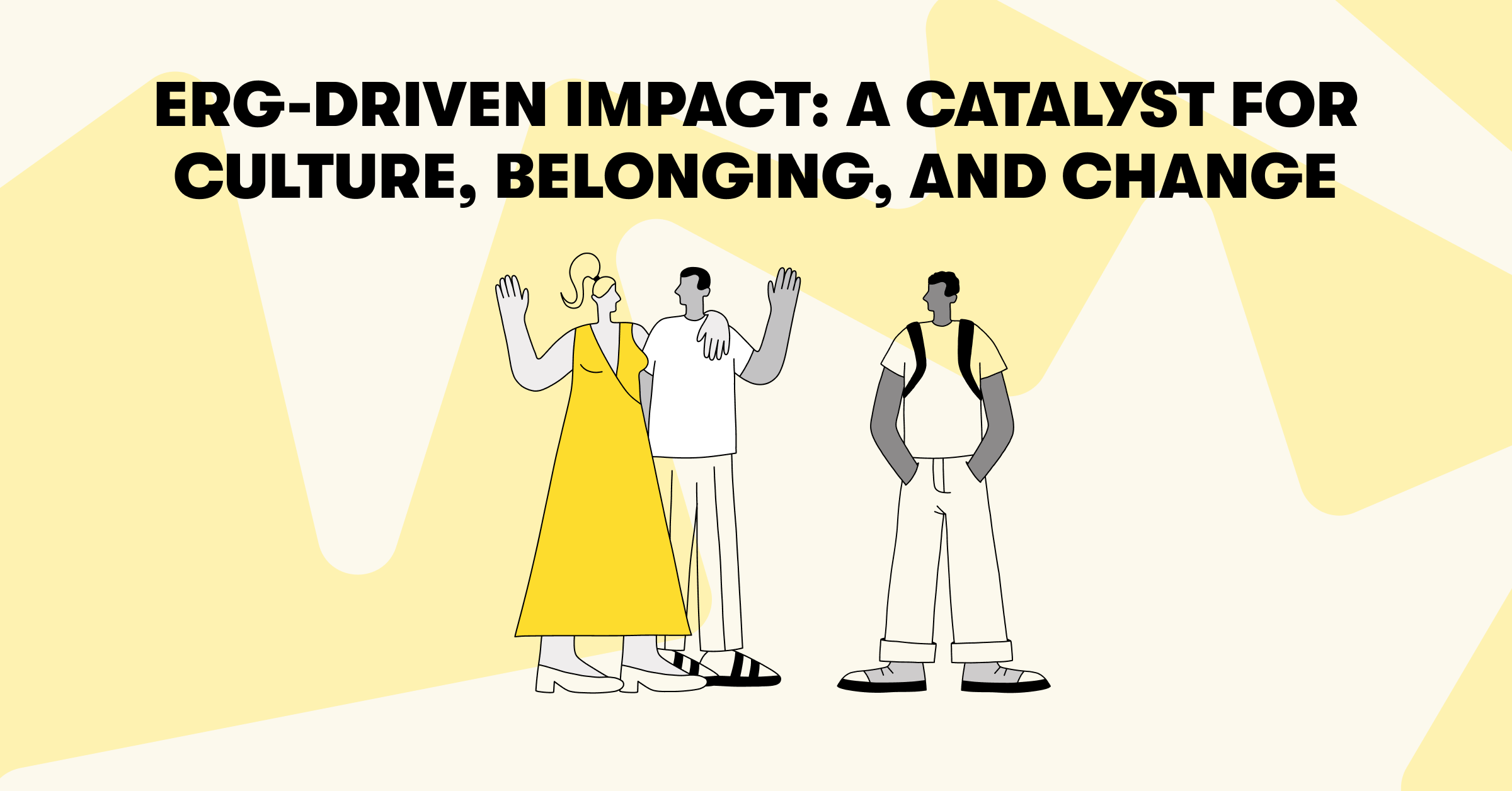The Future of ERGs: Driving Belonging, Engagement, and Impact
Part 3 of Deed’s ERG-Driven Impact: A Catalyst for Culture, Belonging and Change Series
Employee expectations are evolving—and so is the role of Employee Resource Groups (ERGs) in shaping workplace purpose. Today’s most impactful companies are tapping into ERGs not just for community, but as strategic drivers of culture, connection, and change.
Deed’s latest series, ERG-Driven Impact: A Catalyst for Culture, Belonging and Change, explores how ERGs can powerfully shape your social impact strategy by fueling corporate volunteering, advancing a culture of belonging, and transforming values into visible, measurable outcomes.
A New Force for Employee-Led Impact
In today’s workplace, Employee Resource Groups (ERGs) are entering a pivotal new chapter. As companies navigate a changing cultural and legal landscape, ERGs remain one of the most powerful—and trusted—ways to foster belonging, build community, and support employee development from within.
When resourced and recognized, ERGs are more than affinity spaces. They’re catalysts for connection, engagement, and measurable impact. They help shape values-led strategies by grounding them in lived experience and grassroots energy.
In this post, we explore the evolving role of ERGs and how companies can empower them—thoughtfully and strategically—to lead purpose-driven change across the organization.
What Are Employee Resource Groups (ERGs)—and Why Do They Matter More Than Ever?
ERGs are voluntary, employee-led groups organized around shared identities (such as race, gender, or ability), experiences (like caregiving or military service), or values (like sustainability or mental health).
Though grassroots in nature, these groups play an outsized role in shaping culture and purpose. They create safe, visible spaces for underrepresented voices, and when supported, serve as strategic partners across people, culture, and impact functions.
Their growing influence lies in their ability to connect corporate goals with real community needs—and to mobilize peers through trust, insight, and authenticity.
The Evolution of ERGs: A Shift Toward Strategic Impact
ERGs bring something unique to corporate volunteering: community trust, cultural insight, and peer-driven motivation. These traits make them incredibly effective at activating employees where traditional top-down initiatives often fall short.
|
Then |
Now |
|
Community support spaces |
Culture shapers and impact leaders |
|
Limited influence |
Budget holders with executive sponsorship |
|
Mostly internal-facing |
Active players in CSR and ESG strategy |
|
Occasionally consulted |
Embedded in regular cross-functional decision-making |
Five Ways ERGs Are Shaping Purpose From Within
-
Informing Community-Centered Giving
ERGs bring deep insight into the causes that matter most to their members and communities. They partner with CSR teams to identify nonprofit partners, direct grantmaking, and lead campaigns rooted in lived experience. -
Activating Employee Volunteering and Advocacy
From climate action to equity-centered initiatives, ERGs drive participation through trusted networks and peer accountability, making volunteering more accessible, relevant, and scalable. -
Elevating Underrepresented Voices in Company Strategy
ERGs help shape storytelling, product inclusion, and policy advocacy. They ensure that purpose initiatives are not just inclusive in intent, but intersectional in design. -
Influencing ESG and Sustainability Goals
ERGs contribute valuable feedback on issues like supplier diversity, climate equity, and community resilience—areas where employee insight can guide more just and sustainable outcomes. -
Building Talent and Leadership Pipelines
By mentoring peers, sponsoring talent, and surfacing emerging leaders, ERGs play a critical role in leadership development, especially when supported by formal recognition and resources.
ERG Participation and Belonging: What the Data Says
According to McKinsey, employees who participate in ERGs they consider effective report feeling included at work at a rate of 83%—compared to just 59% among those in less effective groups.
This powerful gap highlights the real impact ERGs can have on cultivating a sense of belonging and psychological safety at work—especially when they’re well-supported.
How to Empower ERGs for Impact
- Give them budget and decision-making power
- Recognize ERG leads as strategic contributors
- Include ERGs in impact planning and reporting
- Use platforms (like Deed) that allow ERGs to run their own campaigns
- Create executive sponsorship and mentorship loops
How Deed Supports ERG-Led Belonging and Action
Deed gives ERGs the tools they need to lead with purpose:
- Campaign autonomy to run giving, volunteering, and advocacy efforts
- Real-time data to measure participation and impact
- Cross-functional collaboration through Communities and private groups
- Storytelling dashboards to amplify ERG-led work company-wide
Impact doesn’t have to come top-down. With the right tools, it can grow from the inside out.
A New Era of Employee-Led Purpose
As companies rethink how they build belonging and lead with values, ERGs offer a roadmap for authentic, employee-led purpose. They connect the dots between culture, community, and action at a time when connection matters more than ever.
Investing in ERGs isn’t just a cultural decision—it’s a business one. Because when employees are trusted to lead, they don’t just show up. They drive change.
Ready to empower your ERGs for real impact? Let’s talk.


